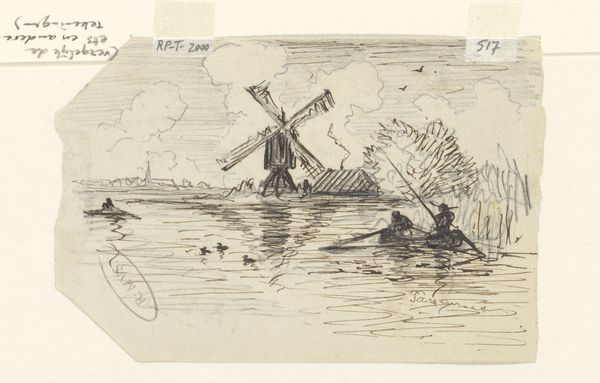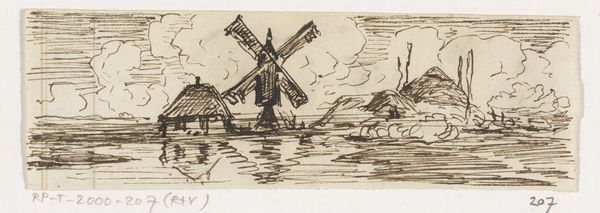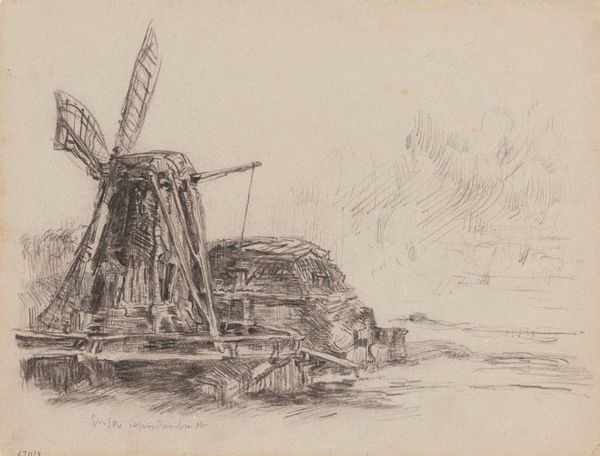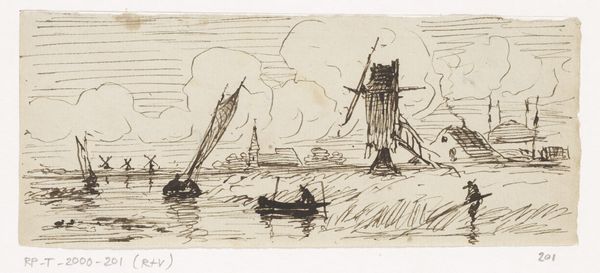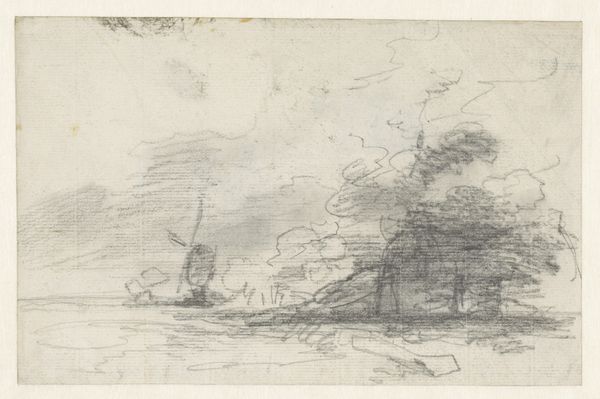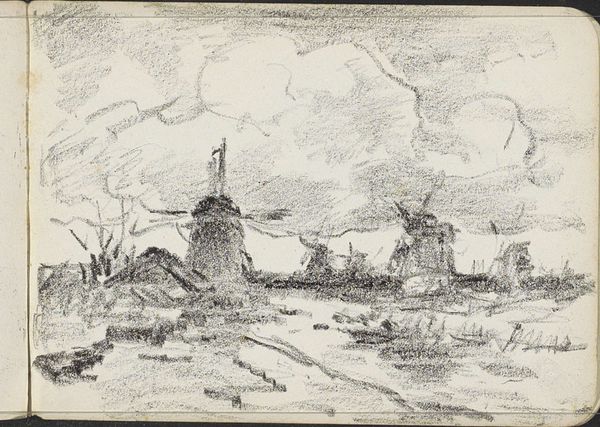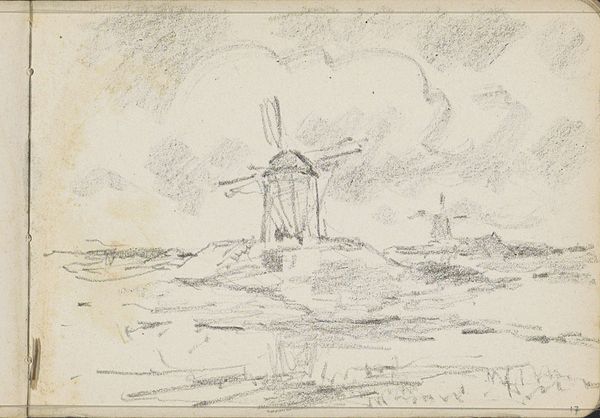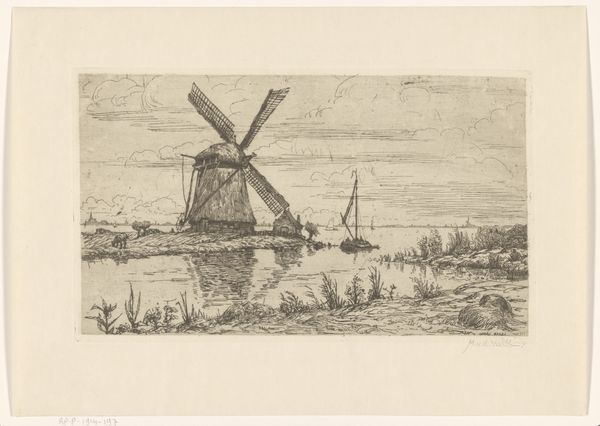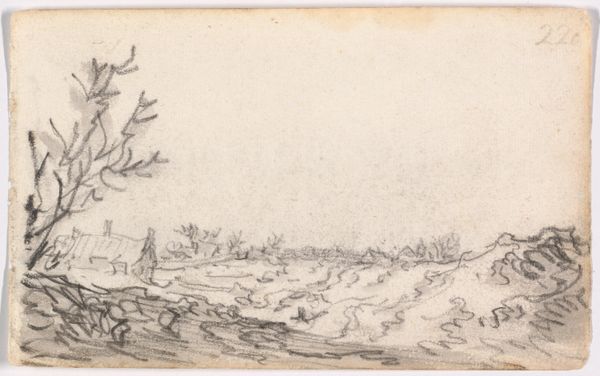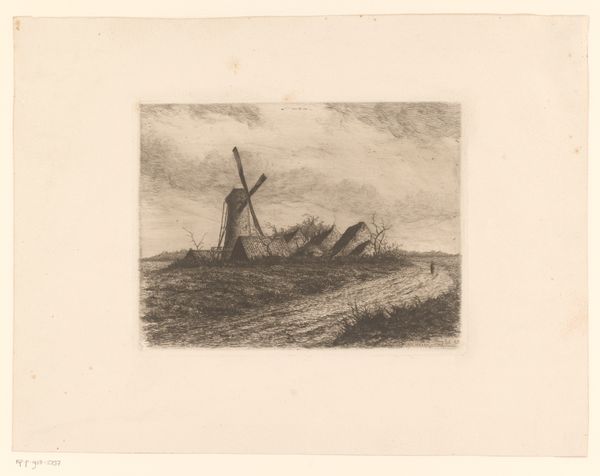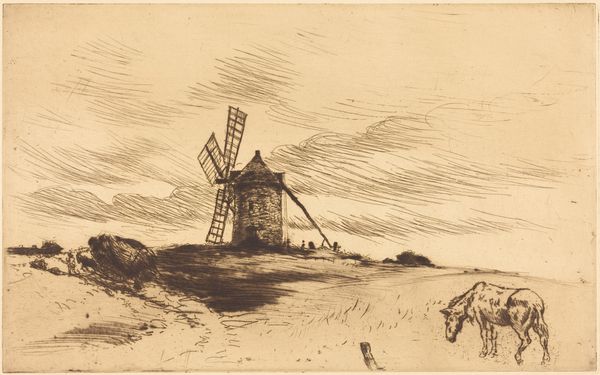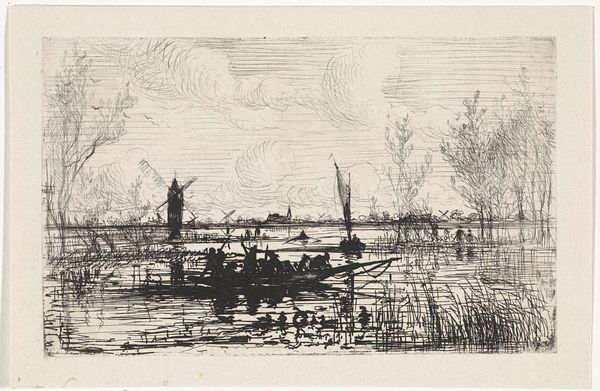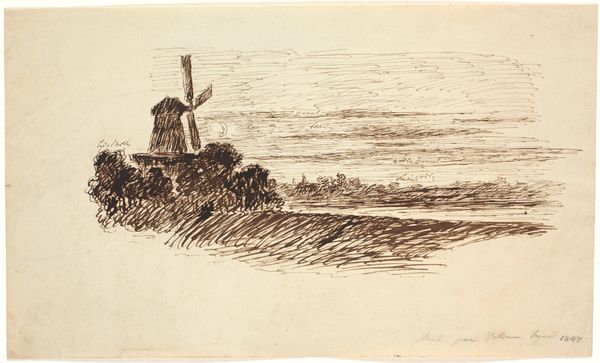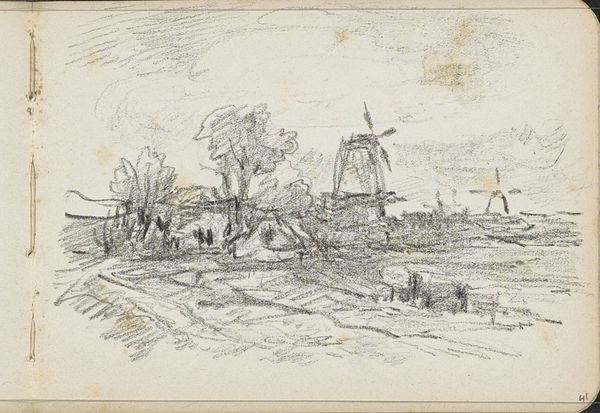
drawing, etching, paper, ink
#
drawing
#
dutch-golden-age
#
etching
#
pencil sketch
#
landscape
#
etching
#
paper
#
ink
#
geometric
Dimensions: height 48 mm, width 80 mm
Copyright: Rijks Museum: Open Domain
Curator: Allow me to introduce you to "Twee koppen," or "Two Heads" by Johannes Tavenraat, created possibly around 1869. The work, held at the Rijksmuseum, employs etching in ink on paper to capture a vibrant landscape. Editor: It feels both immediate and expansive. The looseness of the lines and the monochrome palette really make the eye wander across the entire plane of the landscape. The composition uses a wonderful counterpoint between near and far. Curator: Indeed, the seemingly spontaneous quality, while partially owed to the medium of ink sketch, is characteristic of Dutch Golden Age landscape art and it represents a romanticised rural simplicity that contrasted with the growing industrialization of the Netherlands. Windmills, of course, were both integral to the land's function and a symbol of Dutch identity. Editor: Absolutely. I'm particularly drawn to the way Tavenraat uses layering of shapes and varied linework. It gives a real sense of depth and creates points of focus, like the reflections on the water that draw the viewer into the middle-ground activity near the boats and the windmill. Curator: The contrast is particularly striking: a man resting to the lower left versus the labor by way of the windmill and busy boating channel. Also, do you note how the cloud formation at the upper left mimics the mass of landscape to its immediate lower side? Editor: The tonal similarities there are certainly evident. It speaks to your points about the integration between the functional infrastructure that exists within this space and how that marries with the aesthetic representation of that land, that those functions allow, at the time of its creation. And what it allowed society to value within it. Curator: Precisely. Tavenraat presents a constructed image of rural serenity and functionality. Editor: A compellingly idealized view rendered through skillful compositional strategies. Curator: A work that rewards close study, revealing the dialogue between the hand, the land, and the culture of its time. Editor: Ultimately, “Twee koppen” gives us so much with what at first glance, seems so little.
Comments
No comments
Be the first to comment and join the conversation on the ultimate creative platform.
